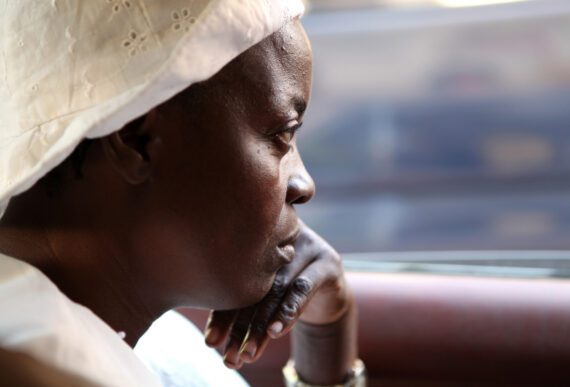By Krisanne Vaillancourt Murphy
Every November, as we celebrate Thanksgiving, we are grateful for food and for the ability to feed our own families. We are also filled with the need to ensure that our entire human family has enough to eat.
Our holiday table reminds us of many other important tables: tables where families come together to share a special meal; tables where our nation’s decision makers negotiate trade, aid, and public policies that affect us all; and the most sacred of tables—the altar where the church gathers to be nourished by communion. Let us enter this month remembering that each table calls us to act with faith and hope.
November is also the anniversary month of the United States Conference of Catholic Bishops’ pastoral letter, “For I Was Hungry & You Gave Me Food: Catholic Reflections on Food, Farmers, and Farmworkers,” first issued in 2003. The letter highlights the issues of food and agriculture and their connection to our faith. As the letter explains, “We focus on how food and fiber are produced, how land is protected, and how agriculture is structured, compensated, and regulated to serve the ‘common good.’”
The pastoral letter began in response to the concern that food and agriculture are “little seen and less understood” by a post-industrial society living increasingly technological lives. We are further removed from food and agriculture than ever before. Yet what we eat, who grows and harvests that food, and the state of the earth that produces these essential goods are among the very things we as Christian disciples should bear in mind. It’s valuable to focus on them this harvest month and every month. More than a decade after it was first published, the bishops’ pastoral letter still serves as a poignant reminder that food and agriculture must be viewed from a deep faith perspective.
November is also Native American Heritage month. Native Americans were once the most agriculturally prosperous group of people in the United States. Yet a snapshot of life on reservations today shows a banquet of scarcity. Hunger and poverty are widespread. In fact, Feeding America has found that 60 percent of all counties with majority Native American populations face dangerously high rates of food insecurity. Such statistics are a sobering reminder that many marginalized brothers and sisters are missing from our tables of plenty.
A broader look at hunger in our country shows that 48 million Americans live in households that struggle to put food on the table, and that 1 in 5 children is at risk of hunger.
Unfortunately, Thanksgiving won’t be a feast for everyone.
The pastoral letter addresses the complexities of our food system, but it is also a profoundly hopeful document. The letter tells us, “We know these are not easy times, but as believers we have hope for the days ahead: We have the capacity to overcome hunger in our nation and around the world.”
Through Bread for the World’s annual Offering of Letters campaigns, churches around the country advocate to end hunger by lifting up food and agriculture. These efforts to work toward better policies remind us that God intends for all to be fed.
This Thanksgiving, let us remember that ending hunger in our lifetime will only be a reality if we act with faith and hope at each of the sacred tables in our lives.
Krisanne Vaillancourt Murphy is a senior associate for national Catholic engagement at Bread for the World.



